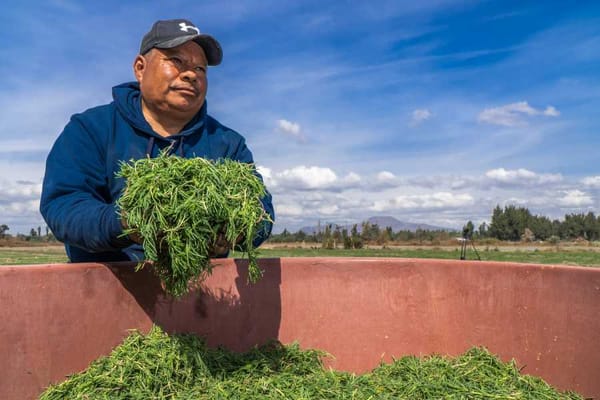Who was Rosita Quintana, the Argentinean who seduced Mexico?
Diva of the Golden Age of Mexican Cinema, Rosita Quintana worked with Pedro Infante, Germán Valdés, Jorge Negrete and film director Luis Buñuel.

It was 1948 when Trinidad Rosa Quintana Muñoz, better known as Rosita Quintana, made her film debut in the movie La Santa del barrio by director Chano Urueta, and although on that occasion she had a secondary role, it was enough to make her known in the artistic community, and later she would share credits with figures such as Pedro Infante, Tin Tan, and Jorge Negrete, thus becoming one of the great divas of Mexican cinema.
The so-called Lady of America, who died early Monday morning at the age of 96, was born in Buenos Aires, Argentina, on July 16, 1925. Since she was a child she showed interest in art and participated in small school productions. When she finished her elementary school studies, she entered the conservatory of artists Emilio and José de Caro, where she learned singing and acting. From then on, she began to work in theater in her country, and in 1947 she moved to Mexico, where she made her debut as a singer at the renowned nightclub El Patio.
Her leap to fame came in the 1948 film Calabacitas tiernas, where she shared credits with Germán Váldez Tin Tan and his brother, Ramón Váldez. This was followed by other titles such as Soy charro de Levita, No me defiendas compadre, El mil amores, Ahí vienen los Mendoza, Dos gallos de pelea and Susana, where she was directed by Luis Buñuel.
In 1960 her work reached the international spotlight, after being recognized at the San Sebastian Film Festival for her leading role in the Argentine film El octavo infierno, which follows the life of a woman who fights to prove innocence of her son, who is accused of murder. Besides that award, her list of accolades includes a Golden Ariel she received in 2016, a Liberty Bell at the Berlin International Film Festival, and a distinction at the Moscow Film Festival for the film El hambre nuestra de cada día (Our Daily Hunger).
A faithful believer that discipline is what guarantees success in life, the artist combined her career as an actress with music. She released several albums such as Rosita Quintana, Música de la película cuando México Canta and Canciones festivas con Rosita Quintana, honoring rancheras.
In her films she sang alongside Pedro Infante and Joaquín Pardavé, and in most of her productions she was accompanied by Mariachi Vargas de Tecalitlán.
She also participated in several soap operas, including La intrusa, Así son ellas, Peregrina, and La dueña. Her last film participation was in the comedy Club Eutanasia, which was released in 2005. In her last years, she had stayed away from public life, and it was not until five years ago that she appeared at the Ariel Awards ceremony to receive her honorary award.
Just a few weeks ago it had been reported that she would undergo surgery to remove a thyroid tumor, and although on that occasion she was spared, complications claimed her life. Currently on display at the Estanquillo Museum are several posters of the films in which she participated, which are part of the exhibition Gilberto Martínez Solares's photographic ingenuity. 78 years of creation.




